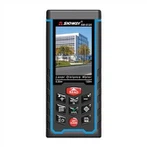How to test the rectifier bridge with a multimeter
The rectifier bridge is to connect four rectifier diodes (semiconductor components that convert current into DC power) in series in a bridge structure, and then package them together (plastic package). Like the bridge rectifier composed of four rectifier diodes, the rectifier bridge has There are positive and negative points, among which - the pair of feet is the output end of DC compression. - Generally connected to the load or connected to the load after filtering and voltage stabilization, and supply DC energy to the load.
1. Measure one by one, also called one by one measurement method
The characteristics of the diode should be clear (large reverse resistance, small forward resistance), and the quality of the diode can be measured with a multimeter. At the end of the article on identifying diodes and measuring whether they are good or bad, it has been introduced before. If you don’t understand it, you can read it. It is relatively easy to understand, so I won’t repeat the previous introduction here.
As shown in the internal structure of Figure 1 in the text, set the multimeter to the R×10k range. Measure the forward and reverse resistance between pin ② and pin ④ of the AC power input terminal. It can be known from the circuit structure that no matter how the two test leads are connected for measurement, for a For a bridge stack with good performance, the forward and reverse resistance between pin ② and pin ④ should be very large, because there are always diodes in the reverse operating state for each measurement; if the measured forward and reverse resistance is small (for example, only a few thousand Europe), it means that one or more diodes in the pile have breakdown or leakage, and can no longer be used.
Of course, it may not be possible to fully determine which pipe in the bridge pile is damaged by such methods. Therefore, you should continue to measure the forward resistance between pin ① and pin ③ of the DC output terminal. The resistance is slightly larger than the forward resistance of a single diode, indicating that the bridge is normal. (https://www.dgzj.com/) If the forward resistance is close to the forward resistance of a single diode, it means that there are one or two in the bridge weir. (Two buttocks) Diode breakdown; if the forward resistance is large, much larger than the forward resistance of the two diodes, it means that the diode in the bridge has a large forward resistance or an open-circuit fault.
The method of discrimination is: first find out the DC output positive (i.e. ③ pin) terminal, assuming that a certain pin is ③ pin. Set the multimeter to R×1K position, press the red test pen to ③ pin, and use the black test pen to respectively connect ① pin, ② pin, ④ pin, if there is a small resistance value (on resistance) for three times, it means that the assumption is correct, that is, the ③ pin is the positive pole of the DC output of the bridge stack. If it is wrong, it is necessary to assume that the ② foot is tested again until the real ② foot is found.
After finding the ③ pin, the rest of the spare pins can be determined: still connect the ③ pin with the red test lead, and test the forward resistance of the other three pins with the black test lead, and the footprint with the largest resistance value is the negative pole of the DC voltage output terminal. The remaining two feet are AC input terminals, there is no difference between positive and negative polarity. (The pointer multimeter used here, if you are using a digital multimeter, you can also use a diode test file, but note that the red test lead of the digital multimeter is connected to the positive pole of the internal battery, so the order of the test leads is opposite to the above method.)







